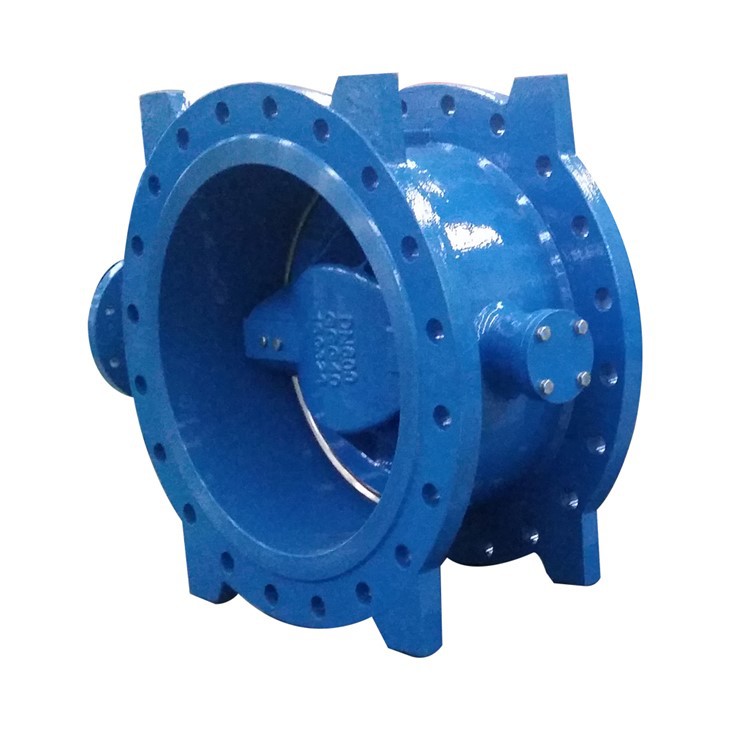Can a butterfly valve be used in high - viscosity fluids?
Hey there! I'm a supplier of butterfly valves, and today we're gonna talk about whether a butterfly valve can be used in high - viscosity fluids. It's a question I get asked a lot, so let's dive right in.
First off, let's understand what high - viscosity fluids are. High - viscosity fluids are those that are thick and flow slowly. Think of substances like honey, molasses, or heavy oil. These fluids have a high resistance to flow, which means they don't move easily through pipes and valves compared to low - viscosity fluids like water.
Now, let's look at butterfly valves. A butterfly valve is a type of quarter - turn valve that uses a disc to control the flow of fluid through a pipe. When the disc is parallel to the flow, the valve is fully open, and when it's perpendicular, the valve is fully closed. They're popular because they're relatively simple in design, lightweight, and cost - effective.
So, can a butterfly valve handle high - viscosity fluids? Well, it depends. There are a few factors to consider.
Advantages of Using Butterfly Valves in High - Viscosity Fluids
One of the good things about butterfly valves is their quick operation. Since they're quarter - turn valves, you can open or close them fast. This can be useful in applications where you need to control the flow of high - viscosity fluids rapidly. For example, in a manufacturing process where you're transferring thick substances from one tank to another, a quick - acting valve can help maintain the efficiency of the process.
Another advantage is that butterfly valves have a relatively low pressure drop when fully open. This means that even with high - viscosity fluids, the valve doesn't cause a huge reduction in the pressure of the fluid as it passes through. This is important because high - viscosity fluids already require more energy to move through the pipes, and a valve with a low pressure drop helps to minimize the additional energy needed.
Challenges of Using Butterfly Valves in High - Viscosity Fluids
However, there are also some challenges. High - viscosity fluids can cause problems with the sealing of the butterfly valve. The thick fluid can get stuck between the disc and the valve seat, preventing a proper seal. This can lead to leakage, which is obviously a big no - no in many applications. For instance, in a chemical processing plant, any leakage of high - viscosity chemicals can be dangerous and costly.
Also, the high resistance of high - viscosity fluids can put more stress on the valve components. The disc may have a harder time rotating, and the actuator (the device that opens and closes the valve) may need to be more powerful to overcome the resistance. This can increase the wear and tear on the valve, reducing its lifespan.
Types of Butterfly Valves for High - Viscosity Fluids
There are different types of butterfly valves that may be more suitable for high - viscosity fluids. For example, the Bray Double Offset Butterfly Valve has an offset design that helps to improve the sealing performance. The double offset reduces the friction between the disc and the seat during operation, which can be beneficial when dealing with thick fluids.
The Butterfly Valve Double Flanged is another option. Double - flanged valves are more securely attached to the pipeline, which can be important when dealing with high - viscosity fluids that may cause more stress on the valve.
The 2 Eccentric Butterfly Valve also offers some advantages. The eccentric design allows for a better sealing surface, which can help prevent leakage of high - viscosity fluids.
Mitigating the Challenges
If you decide to use a butterfly valve with high - viscosity fluids, there are some steps you can take to mitigate the challenges. First, you can choose a valve with a more robust construction. A valve made of high - quality materials can better withstand the stress caused by the thick fluid.
You can also use a more powerful actuator. A stronger actuator can ensure that the disc can rotate smoothly, even when dealing with high - viscosity fluids.
Regular maintenance is also crucial. Cleaning the valve regularly can prevent the build - up of thick fluid on the disc and seat, which can improve the sealing performance.
Conclusion
In conclusion, a butterfly valve can be used in high - viscosity fluids, but it's not without its challenges. The advantages, such as quick operation and low pressure drop, make them an attractive option in some cases. However, the sealing issues and increased stress on the valve components need to be carefully considered.


If you're in the market for a butterfly valve for high - viscosity fluids, I'd be more than happy to help. We have a wide range of butterfly valves, including the ones I mentioned above, that are designed to handle different types of applications. Whether you're in the food industry, chemical processing, or any other field that deals with high - viscosity fluids, we can find the right valve for you. Don't hesitate to reach out for more information and to start a discussion about your specific needs. Let's work together to find the best solution for your fluid control requirements.
References
- Valve Handbook: A Guide to Valve Selection and Application, Industrial Valve Association
- Fluid Mechanics Textbooks covering viscosity and valve flow characteristics